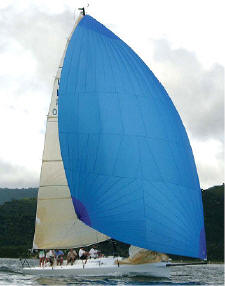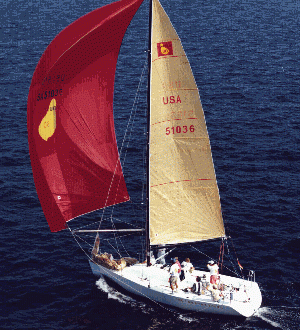What is a Sport Boat?
If you can ask a room full of sailors the question “What is a sport boat?” I guarantee you will get a different answer from each one…believe me, I’ve done it!!! It can become a pretty emotional issue for some people, depending on whether you own a sport boat or are racing against one.
I understand their frustrations with the present rating systems and know exactly where they’re from, although my perspective is a little different. Let me explain. I am the designer of the VG30, which is designed to the Mount Gay 30 Rule. The Rule produces modern looking, go fast boats which, unfortunately, are quite often mistaken for a sport boat. I am constantly having to do battle with PHRF and race committees to make sure that our boat is rated fairly and grouped with boats of a similar rating band. The first VG-Mount Gay 30, named Surprise, rates anywhere from 78 in Narragansett Bay to 66 in Western Long Island, no more than a hundred miles away from each other. That’s 12 seconds worth of perception…or some might say ignorant protectionism and bias.
So by defining what is not a sport boat, hopefully I can help you define what is. Surprise is 5300 lbs in displacement with proportionately more wetted surface than boats that are 800 to 1400 lbs lighter with almost as much waterline (e.g. Mumm 30, Henderson 30, Melges 30, J90). The boats sailing displacement to length ratio is 119 and light ship displacement to length ratio is 98. It has an upwind sail area to displacement ratio of 28 with a 100% jib, and a downwind upwind sail area to displacement ratio of 68 with a masthead spinnaker. It has an interior complete with a galley, head, nav station, 4 permanent berths, and an inboard diesel engine (not exactly what you would find in a true go-fast sport boat).

I crewed on board Surprise when she competed in a sport boat fleet at the 1997 NYYC Race Week. We found that our competition was not necessarily against the other boats in our class (three 1D35s, two Melges 30s, one Henderson 30, two J90s, and one Mum36), but against the clock and ourselves. Racing from the back of the fleet and being totally controlled on the course, although quite challenging, is not much fun for the owner and crew.
Okay, so what is a “sport boat?” In my humble opinion it is a powerful ultra-light boat with oodles of sail area that has been designed with the sole purpose of competing in round-the-cans events. They have little or no accommodation with sail and gear stowage as the sole purpose of an interior volume. They have a high ballast to weight ratio (typically 50% and above). The sailing displacement to length ratios are 105 or less, and the sail area to displacement ratios are over 30 (upwind) and 65 (downwind). Sail area to wetted surface ratios are difficult to define as designers tend to keep wetted surface measurements to themselves. Anything over 3.2 is considered pretty slippery. Whether these boats fly asymmetric chutes from sprits, or symmetrics from a convention pole is irrelevant. Each has their advantages in different conditions.
This is not a hard and fast criteria and a sail boat that exhibits just one or two of these qualities does not necessarily make it a sport boat. There in lies the ambiguity in defining what a sport boat really is and why there is so much discussion and “knee-jerk” reactions to this type of high performance sail boat.
Other sources:
- The RORC have a defined rule for sportboat owners that wish to race in a fleet of like boats.
- Bob Perry takes a shot at the definition of a sportboat in his description of the Columbia 30.
- Ullman Sails says the modern sportboat is light, fast, and fun to sail. They are great for sailing and provided a new spark to the sport.

